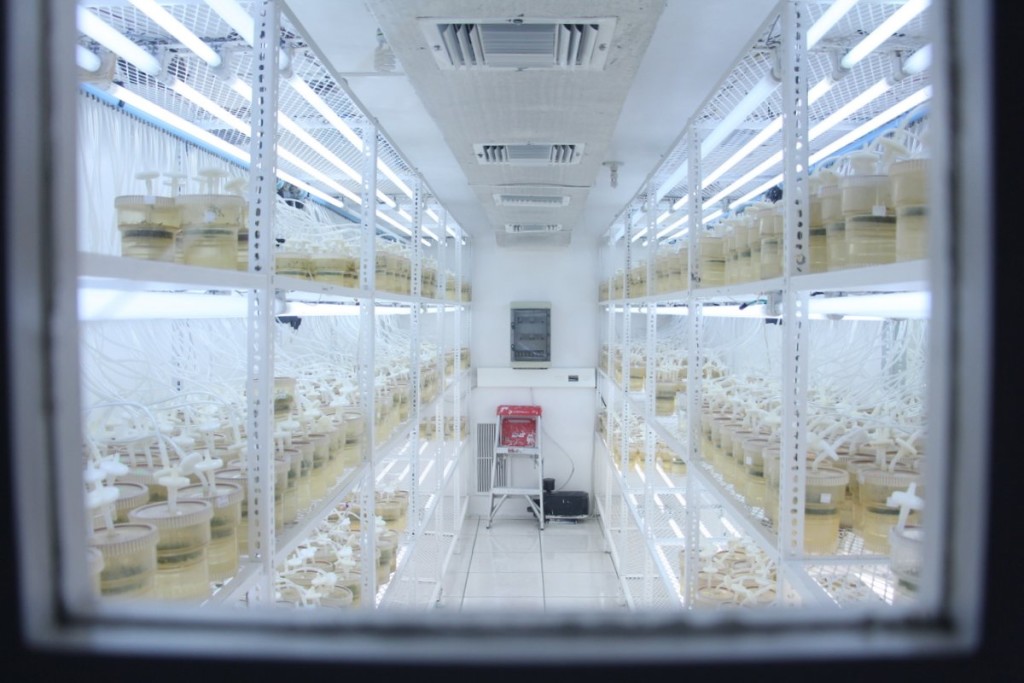A reaction to: Protecting coffee from intensification – Science Magazine, January 8, 2015.
In the highlands of Ethiopia, farmers’ successes are putting in peril one of the most important resources to the global coffee industry in the face of a changing climate: the wild coffee forests. Arabica coffee, as you all know, has its origins in these forests. Somewhere in the forest, is the MOTHER of all Arabica coffee (and cousins, great aunts, etc.). Farmers have been slowly encroaching on the habitat of the wild coffee trees. Their management of this forest, and the increasing extension of agricultural areas, is diminishing these wild coffee relatives’ suitable habitat for— the genetic resources for coffee. There have been forests designated as UNESCO Biosphere Reserves and that is an important measure, but it may not be enough to protect the genetic integrity of this resource.
Why did this Science article catch my eye? I reside in Nicaragua, across the globe from Ethiopia, but live, breathe and drink coffee like all Coffeelands readers. You also know the news in coffee over the past few years isn’t always good. For every article about the health benefits of the drink, or the continued innovation on the commercial side, there is one about coffee leaf rust, droughts in Brazil and climate change. The last one poses the biggest threat to the true long-term sustainability of this industry. Here in Nicaragua, the Coffee Under Pressure study that CIAT and CRS undertook has predicted an 82% loss of suitable production areas for coffee farms by 2050 IF NOTHING IS DONE. Something will be done – but will it be enough?
A new book by the FAO, Coping with climate change: the roles of genetic resources for food and agriculture, emphasizes that the key for adaptation to climate change in our crops and livestock is the increased use of the genetic diversity found in wild crop relatives and overlooked varieties. In order to use these tools for the greatest benefit, we first need to conserve and understand the diversity of these crops. For coffee, there are some positive signs.
In the immediate short term, innovative breeding techniques are making use of genetic diversity by crossing traditional varieties and a wild Arabica from Africa (Sarchimor x Rume Sudan; Caturra x Ethiopian). These varieties were first created by CIRAD and are currently being commercialized by ECOM. These hybrids are promising, innovative first steps that begin to demonstrate the importance of preserving and using the diversity found in the Arabica species. The hybrid lines that are propagated have a combination of traits that is very attractive to a grower, and due to the biological phenomenon of heterosis, or hybrid vigor, these are very productive varieties with yields in demonstration plots above 80QQ/mz.
For the long term, groups like CIAT and the World Coffee Research at Texas A&M, and the Kew Gardens in England are working to catalog the current diversity of species, genotyping them and making this information available to researchers and breeders.
There is some urgency here. The FAO book states that plants and animals with a shorter reproductive cycle will be favored under a rising temperature. The shorter cycles means there are more recombination of genetic material, and therefore a quicker response to changing climatic conditions. What about crops with longer cycles – like coffee? Aaron Davis of the Kew Botanical Gardens had a sobering study a few years ago. Not only are wild populations of Arabica coffee threatened by encroachment by farmers, but climate change is drastically altering the suitability of their native habitats. In 70 years, the computer model suggests that there may no longer be any suitable habitats for wild Arabica coffee in Ethiopia. In 70 years, wheat or corn could go through 70 – 140 generations, depending on if you grew one or two crops a year. That’s a lot of opportunities for genetic recombination. If the average coffee plant on a farm lives 25 productive years, yet is reproductively viable in 5 years – we might get 14 recombinations – a very small number in comparison. Those are small odds in the face of raising temperatures and altered rainfall patterns.
There are no short term answers in preparing our industry against climate change. We need more investment in research and breeding for the long term but it is only through the coordinated efforts of research organizations like Kew Botanical Gardens, WCR, CIRAD, UCD Coffee Center, CATIE and others; the national coffee institutes – IHCAFE, ICAFE, ANACAFE, Federacion Nacional de Cafateros and with the support of the private sector will we fully realize the value of the genetic resources in coffee and help create new varieties that will allow for the continued production and consumption of Arabica coffee to 2100 and beyond.



